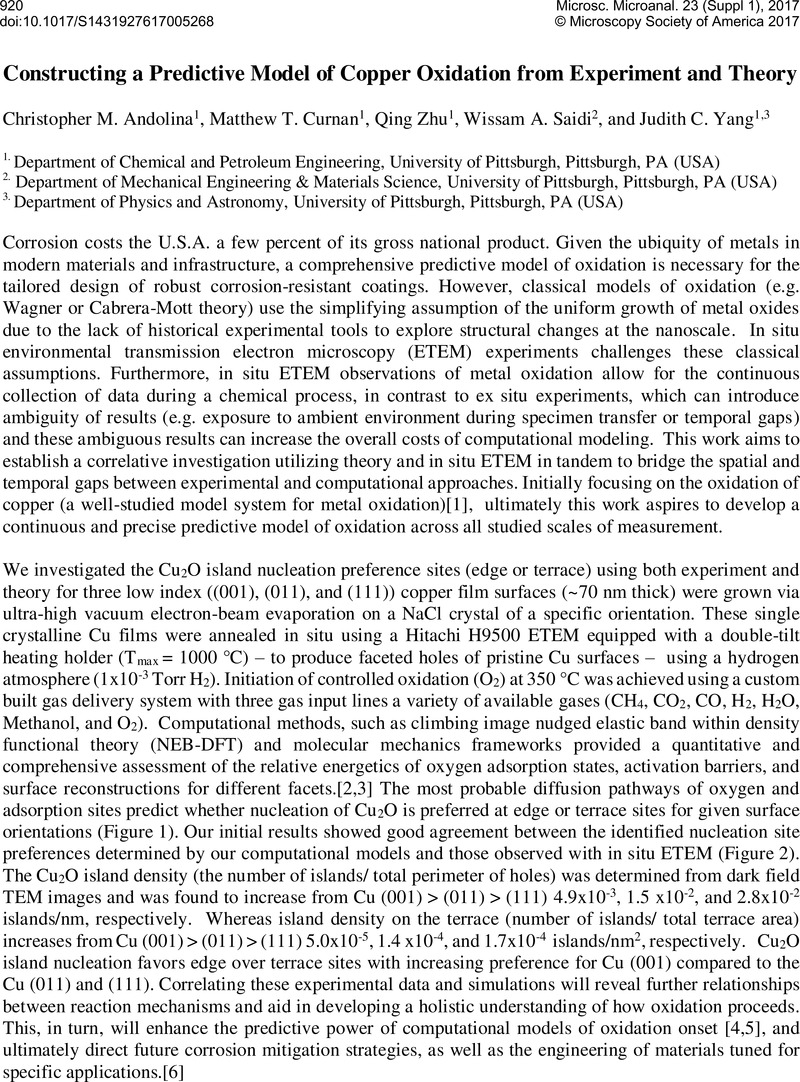Crossref Citations
This article has been cited by the following publications. This list is generated based on data provided by Crossref.
Chi, Hao
Andolina, Christopher M.
Curnan, Matthew T.
Li, Meng
Veser, Gotz
and
Yang, Judith C.
2018.
In situ Observation of C112O Island Shrinking on Cu(100) Facet under Methanol Using Environmental Transmission Electron Microscopy.
Microscopy and Microanalysis,
Vol. 24,
Issue. S1,
p.
302.
Curnan, Matthew T.
Andolina, Christopher M.
Li, Meng
Zhu, Qing
Chi, Hao
Saidi, Wissam A.
and
Yang, Judith C.
2019.
Connecting Oxide Nucleation and Growth to Oxygen Diffusion Energetics on Stepped Cu(011) Surfaces: An Experimental and Theoretical Study.
The Journal of Physical Chemistry C,
Vol. 123,
Issue. 1,
p.
452.
Chi, Hao
Curnan, Matthew T.
Li, Meng
Andolina, Christopher M.
Saidi, Wissam A.
Veser, Götz
and
Yang, Judith C.
2020.
In situ environmental TEM observation of two-stage shrinking of Cu2O islands on Cu(100) during methanol reduction.
Physical Chemistry Chemical Physics,
Vol. 22,
Issue. 5,
p.
2738.





